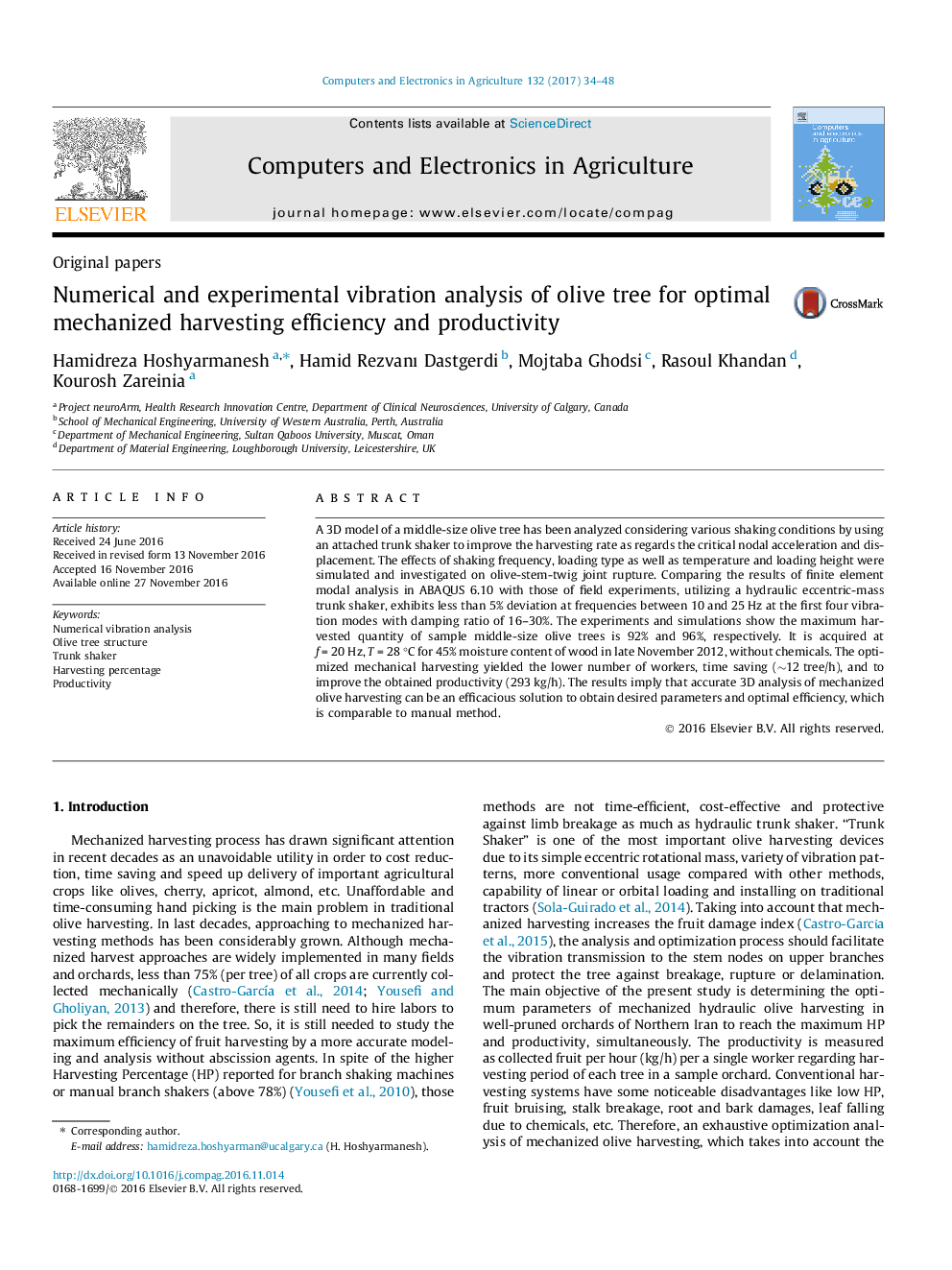| Article ID | Journal | Published Year | Pages | File Type |
|---|---|---|---|---|
| 4759220 | Computers and Electronics in Agriculture | 2017 | 15 Pages |
â¢Accurate dynamic 3D model of an olive tree structure was numerically simulated.â¢The effects of significant factors were all considered based on natural situation.â¢Mean results of 60 experiments (trees) were compared to those of FEA.â¢Linear actuating at higher temperature enhanced the productivity more than 20%.â¢Statistical analysis was performed to evaluate the influence of parameters on harvesting percentage.
A 3D model of a middle-size olive tree has been analyzed considering various shaking conditions by using an attached trunk shaker to improve the harvesting rate as regards the critical nodal acceleration and displacement. The effects of shaking frequency, loading type as well as temperature and loading height were simulated and investigated on olive-stem-twig joint rupture. Comparing the results of finite element modal analysis in ABAQUS 6.10 with those of field experiments, utilizing a hydraulic eccentric-mass trunk shaker, exhibits less than 5% deviation at frequencies between 10 and 25 Hz at the first four vibration modes with damping ratio of 16-30%. The experiments and simulations show the maximum harvested quantity of sample middle-size olive trees is 92% and 96%, respectively. It is acquired at f = 20 Hz, T = 28 °C for 45% moisture content of wood in late November 2012, without chemicals. The optimized mechanical harvesting yielded the lower number of workers, time saving (â¼12 tree/h), and to improve the obtained productivity (293 kg/h). The results imply that accurate 3D analysis of mechanized olive harvesting can be an efficacious solution to obtain desired parameters and optimal efficiency, which is comparable to manual method.
